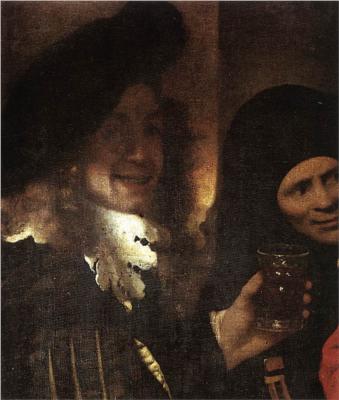 Johannes Vermeer (1632-1675)
Johannes Vermeer (1632-1675)
Born: October 31, 1632; Delft, Netherlands
Died: December 15, 1675; Delft, Netherlands
Nationality: Dutch
Art Movement: Baroque, Dutch Golden Age
The Dutch school of the seventeenth century produced, in effect, a documentary of every aspect of their daily lives. Each painter had his specialty, from tall ships to dead pheasants. Johannes Vermeer was chiefly concerned with interiors and with one room in particular. It features in so many of his carefully composed works, lit from the left by two windows, it has a tiled floor and one map-hung wall. People within this space always seem intent upon what they are doing but in a very detached way.
Why Buy a Museum Quality Vermeer Hand Painted Oil Painting Reproduction?
Decorate your own home or office with Vermeer's paintings of 17th century daily life and other Baroque masterpieces!
With Direct Art Australia, you can be assured of the quality of our replica paintings as we only sell 100% hand painted art. Other online art dealers in Australia only sell prints on canvas, but we step up by having our professional artists replicate famous paintings through the same techniques used to make the original.
Check out our vast collection of Vermeer art reproductions below. Aside from our reasonable rates, we also offer FREE delivery in all areas within Australia.
More About Vermeer...
Vermeer's painted tranquil images did not tally with his real life situation; he and his wife had eleven children. However, there is evidence that Vermeer built himself a space into which, in a sense, he could retreat a camera obscura. It stood at one end of the familiar room, and Vermeer arranged his subjects at the other.
First advocated for artists in the 1550s, the camera obscura can be made to any size. A simple darkened box, it has a pinhole or - in Vermeer's case - a lens in the side. The image of an object passes through the aperture and appears upside down on a black canvas fixed to the interior wall. Vermeer would oil-sketch the projected image in black and white; X-ray analysis reveals it beneath the colour layers. Then he would emerge from his "camera" to paint slowly and meticulously the finished version in full daylight.
In 1675, his mental and physical health deteriorated and died in Delft.


